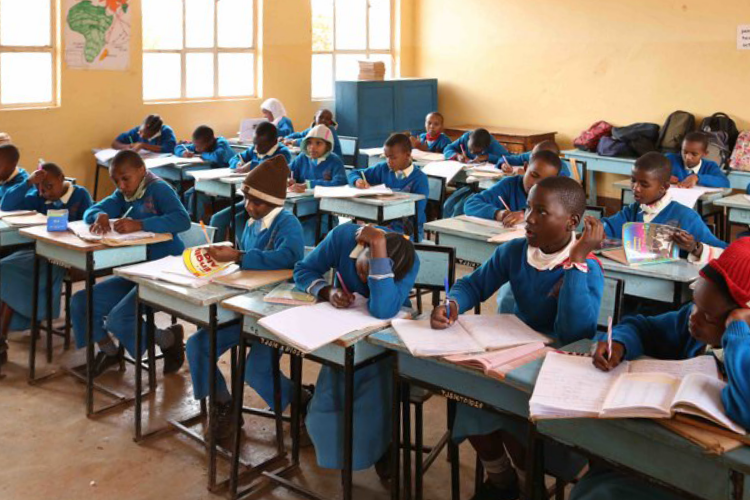Canada spent $20M on Tanzanian schools, but where did the money go?
(Image courtesy of Tanzania Education Corp)
Tanzania is a country that most Canadians cannot point out on a map. Located in the southeastern part of the African continent, Tanzania has suffered from enormous economic turmoil, corrupt governance, and, like many countries in the region, a massive education crisis. According to a report from the World Bank Group, only six percent of Tanzanian men and women receive education beyond secondary school.
The main reason for Tanzania not having a larger educated populace is the lack of infrastructure to support students. This has led Tanzania to request international assistance, and the Canadian government has responded.
The Canadian Monetary Cavalry
In 2014, the Canadian government committed $19,746,048 to “Upgrade Teachers' Colleges” with the funds going to Tanzania to construct improvements to the Kitangali, Mpuguso, Ndala, and Shinyanga Teachers’ Colleges. Funding was awarded in varying amounts over the next eight years, ending in 2022 with a total of $19,594,999 disbursed, approximately $150,000 under budget. However, a detailed look at the funds points to potential areas of overspending.
According to a statement to Coastal Front provided by Global Affairs Canada, the federal government provided money for the following projects:
Kitangali Teachers’ College
Two classroom blocks
One dormitory block for boys
One dormitory block for girls
One washroom block for boys
One washroom block for girls
One lecture hall
One assembly hall
One library block
One laboratory block
Eleven staff houses
Mpuguso Teachers’ College
One washroom block for boys
One washroom block for girls
One library block
One laboratory block
One assembly hall
One lecture theatre
Two classroom blocks
Four staff houses,
One dormitory block for boys
One dormitory block for girls
Ndla Teachers’ College
Seven staff houses,
One washroom block for boys
One washroom block for girls
Two washroom blocks
One library block
One laboratory block
One assembly hall
Two classroom blocks
One dormitory block for boys
One dormitory block for girls
Shinyanga Teachers’ College
One washroom block for boys
One washroom block for girls
One library block
One lecture hall
One dormitory block for boys
One dormitory block for girls
Two blocks of classrooms
One staff house
As you can see, the Canadian government has been funding numerous facilities at the colleges. However, no addresses for these buildings were given. When Coastal Front asked Global Affairs Canada to point out which buildings were built and their geolocations, the organization instead provided tweets from their “Canada in Tanzania” X account, which showed off the buildings themselves, but not their locations.
However, with the pictures as well as the list of finished projects, Coastal Front can make cost estimations for each building.
Estimated Costs
Classroom Blocks
Let’s start with the classroom blocks. Coastal Front could not find documentation from the Tanzanian government outlining specific guidelines for school projects; all that was available was a rubric that was left blank on how to mathematically calculate the cost. However, there is still information available online to piece this together.
Per a World Bank document on building schools in Tanzania, $175 per square metre is the average unit cost of classroom construction, in Canadian dollars. Architectural plans from the Tanzanian government, which are no longer publicly available, indicated the average classroom is 9m by 8m in size, which equals 72 square metres. The classroom block in a Canada in Tanzania X post looks like it can house approximately 10 classrooms. Multiplying 10 by 72 by $175 gives a total construction cost of $126,370.
Staff Houses
Turning to the staff houses, the pictures from Global Affairs Canada showcase a modest single-storey structure that is supposed to have three or four bedrooms.
The structure looks to be around 140 square metres. Housing cost estimates can vary greatly depending on location, construction firms, and the availability of products. The Canadian construction firm, Rider, Levett, and Bucknell, estimates that it costs $1646 per square metre to build a high-rise structure in Tanzania, converted into Canadian dollars. Using a figure half that, $823 per square metre, seems reasonable for a single-storey structure. The estimated cost for a staff house is therefore around $115,250.
Student Dorms, Lecture Halls, Library Blocks, and Laboratory Blocks
For the student dorms, they will accommodate a significant number of students, and if the X pictures are any indication, resemble a classroom block. Although no photos were provided for the lecture halls, library blocks, and laboratory blocks, they are likely similar in size to the classroom blocks. With these assumptions in mind and considering other costs that may be incurred that are not widely known, the dorms, lecture halls, and laboratory block will each amount to an estimated $150,000.
Washroom Blocks
The washroom blocks are not shown in any photos, but operating under the assumption that they are simple, standard washroom facilities, construction shouldn’t cost more than $25,000.
Assembly Halls
Looking at the cost for assembly halls, the picture posted by Global Affairs Canada indicates that it is just a standard assembly hall. Using the same cost per square metre of $600 and the fact that the building looks to have roughly 400 metres squared in space, the assembly hall will cost $330,000.
Total Estimated Cost
Using the figures estimated, total construction costs in each school would amount to:
Kitangali Teachers’ College
Two classroom blocks ($126,370 * 2 = $252,740)
One dormitory block for boys ($150,000)
One dormitory block for girls ($150,000)
One washroom block for boys ($25,000)
One washroom block for girls ($25,000)
One lecture hall ($150,000)
One assembly hall ($330,000)
One library block ($150,000)
One laboratory block ($150,000)
Eleven staff houses ($115,250 * 11 = $1,267,750)
Total: $2,650,490
Proportion of Project Funding, Kitangali Teachers’ College
Mpuguso Teachers’ College
One washroom block for boys ($25,000)
One washroom block for girls ($25,000)
One library block ($150,000)
One laboratory block ($150,000)
One assembly hall ($330,000)
One lecture theatre ($150,000)
Two classroom blocks ($126,370 * 2 = $252,740)
Four staff houses ($115,250 * 4 = $461,000)
One dormitory block for boys ($150,000)
One dormitory block for girls ($150,000)
Total: $1,843,740
Proportion of Project Funding, Mpuguso Teachers’ College
Ndla Teachers’ College
Seven staff houses ($115,250 * 7 = $806,750)
One washroom block for boys ($25,000)
One washroom block for girls ($25,000)
Two washroom blocks ($50,000)
One library block ($150,000)
One laboratory block ($150,000)
One assembly hall ($330,000)
Two classroom blocks ($126,370 * 2 = $252,740)
One dormitory block for boys ($150,000)
One dormitory block for girls ($150,000)
Total: $2,089,490
Proportion of Project Funding, Ndla Teachers’ College
Shinyanga Teachers’ College
One washroom block for boys ($25,000)
One washroom block for girls ($25,000)
One library block ($150,000)
One lecture hall ($150,000)
One dormitory block for boys ($150,000)
One dormitory block for girls ($150,000)
Two blocks of classrooms ($126,370 * 2 = $252,740)
One staff house ($115,250)
Total: $1,017,990
Proportion of Project Funding, Shinyanga Teachers’ College
Grand Total for the initiative: $7,601,710
Cost Breakdown by School
Now, $7.6 million is a dramatic underestimation of the $19.5 million disbursed. There are plenty of unknown potential costs, such as labour expenses, transportation fees, and consultation charges. But even if Coastal Front accounts for this by doubling the total of $7.6 million to $15.2 million, it is still $4.4 million short.
Lack of Transparency
Coastal Front reached out to Global Affairs Canada to ask for the school-by-school accounting for each project. Global Affairs Canada did not provide the information requested but instead stated that “these improvements contributed to attracting and retaining future educators in a country facing a critical teacher shortage, with trainees from the supported colleges achieving significantly higher results in national examinations compared to their peers from other institutions.” While it may be true that teachers and students were helped significantly by the infrastructure, whether this infrastructure was built cost-effectively remains an unanswered question.
Tanzania is a country engulfed in mass poverty. An educated population is one of the ways Tanzania can escape poverty, and these schools will hopefully work to provide just that. But, for the Canadian taxpayer, the project’s seemingly excessive cost and lack of transparency give way to dubious conclusions.


